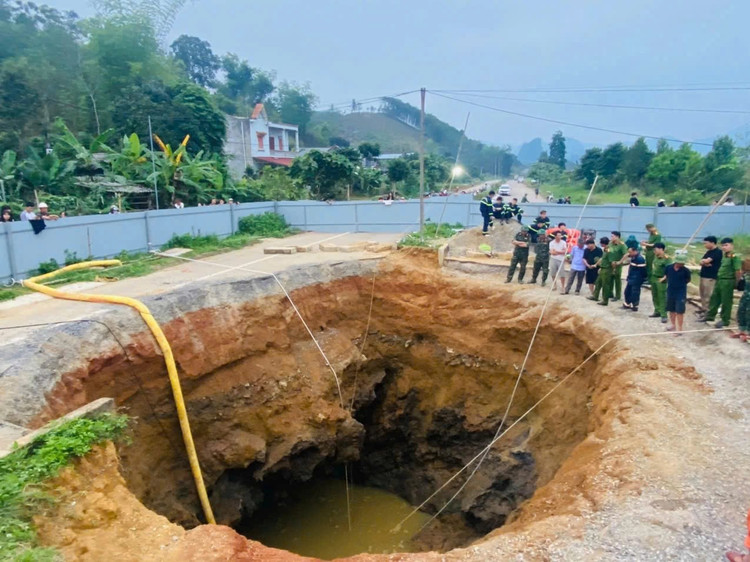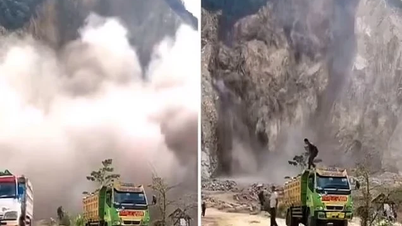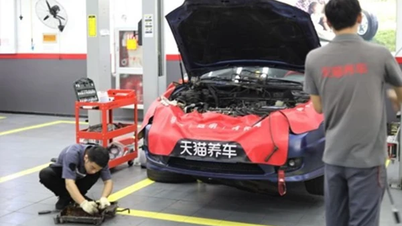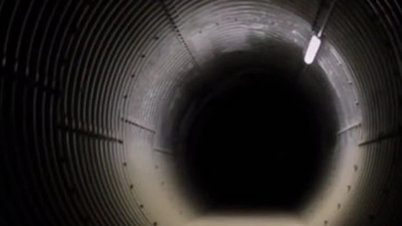The case of a man missing after driving into a "death hole" on National Highway 3B, Kim Lu Commune, Na Ri District, Bac Kan Province is attracting special attention from the public. The search has encountered many difficulties due to the complex developments of the sinkhole. Experts have provided analysis of the causes as well as necessary solutions to deal with the situation of "death holes" spreading in many localities.
Stop pumping water to search for missing victims in 'death hole'
On the afternoon of May 28, the authorities of Na Ri district, Bac Kan province, decided to temporarily stop pumping water out of the "death hole" on National Highway 3B, Kim Lu commune. This decision was made after realizing that continuing to pump water could cause a serious risk of landslides and reduce the possibility of finding missing victims.

"If pumping continues, there is a risk that the mud and large rock layer on the right side of the hole in the direction from Bac Kan to Lang Son will collapse, hindering the search for the victim. Landslides could block the hole's mouth, reducing the probability of the body floating up on its own," said a representative of Na Ri district.
Previously, at around 9pm on May 26, a security camera recorded a motorbike rider crashing into the fence surrounding the "death pit". Rescuers found a piece of corrugated iron and a shirt believed to belong to the victim in the pit. The missing person was identified as Nguyen Duy Ph. (born in 1989, residing in Kim Hy commune, Na Ri district).
According to the leaders of Na Ri district, pumping water is only one of the options to support the search for victims. However, due to the complicated development of the sinkhole with a large amount of mud and soil sliding down and strong underground water flow, the water level cannot be lowered any further. If pumping continues, there is a risk that the mud and large rock layer on the right side of the hole will collapse, hindering the search and possibly blocking the bottom of the hole, reducing the probability of the victim's body floating up on its own.
Despite stopping the water pumping, Na Ri district is still implementing other measures to search for victims and the motorbike that fell into the hole. At the same time, the locality is studying other options, possibly scooping up soil and rocks from the bottom of the hole to assist in the search for victims.
It is difficult to find the body for many reasons.
Giving an initial guess, talking to Knowledge and Life , Dr. Trinh Hai Son, Director of the Institute of Geological Sciences and Mineral Resources, said that the reason why the victim's body has not been found could be due to many reasons. Because normally, karst caves in limestone areas can be a cave system, but can also be many different cave systems and can have many floors. These caves can be connected or not connected.
In this particular case, we see streams, which suggests that there is a strong possibility that several caves were connected and formed a continuous stream. The system could also have multiple levels. When there is a communication (levels are connected), it is not possible to know where the body went.
“In addition, information this morning shows that in some locations right next to it, when pumping water, the water level did not decrease. This means that the cave system here is very complicated: there are places that are connected to each other and places that are not connected to each other,” Mr. Son analyzed.
Mr. Son informed that tomorrow (May 30), the Institute of Geological Sciences and Mineral Resources is expected to send a working group to the site to conduct a detailed survey and investigation. Only after the results of the field investigation are available will more specific assessments be made.
In April and May, 7 "death holes" appeared in Na Ri district (Bac Kan province), threatening 21 households and affecting 12 hectares of agricultural land, forcing the province to declare a state of emergency. Then, on May 20, a sinkhole with a diameter of about 1 meter appeared near provincial road DT188, in Phuc Son commune, Lam Binh district, Tuyen Quang province. On the same day, at km25+300 of National Highway 4D (in Phong Tho district, Lai Chau province), a serious landslide also occurred, causing 2/3 of the surface of National Highway 4D to sink and collapse, posing a high risk of traffic accidents.
Dr. Trinh Hai Son said that, through preliminary surveys, geological factors are the initial cause of landslides in the above localities. Accordingly, the areas where landslides occur all have a geological foundation of carbonate-rich rocks (limestone, calcareous clay, etc.). These rocks are prone to karstification - the dissolution and washing of carbonate rocks due to the impact of water, especially slightly acidic rainwater (due to CO₂ in the atmosphere dissolving to form H₂CO₃ - weak carbonic acid).
To warn and minimize the risk of “death pits”, Dr. Son said that the institute is implementing the project “Investigation and assessment of underground karst characteristics to serve the management and planning of population development in the Northeast region of Vietnam”. Initial results show that the areas with the highest risk of collapse are Bac Kan and Thai Nguyen provinces, followed by Ha Giang, Quang Ninh, Lang Son, etc.
As a temporary solution, Dr. Son recommends zoning off dangerous areas and placing warning signs such as: erecting fences and signs around sinkholes and high-risk areas with signs of subsidence; temporarily evacuating people and nearby structures if there are signs of abnormalities; filling in sinkholes and temporarily reinforcing them with hard materials such as soil, rock, cement, concrete, etc.; reinforcing the surface with reinforced concrete, bored piles, or hard barriers to prevent spreading; limiting the exploitation of underground water, especially in locations near residential areas; regularly monitoring and observing changes in underground water levels.
In the long term, the Institute of Geological Sciences and Mineral Resources recommends that the Department of Agriculture and Environment of Bac Kan province and the People's Committee of Na Ri district soon complete the necessary legal procedures so that the Institute can carry out detailed investigation, survey and research on the geology of this subsidence area.
The phenomenon of sinkholes is a serious warning about the risk of land subsidence in areas with weak geological foundations, requiring drastic action from authorities and vigilance from people to prevent unfortunate accidents.
Source: https://khoahocdoisong.vn/ho-tu-than-nuot-nguoi-o-bac-kan-chuyen-gia-giai-ma-sao-post1544476.html



























































































Comment (0)